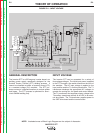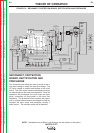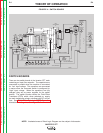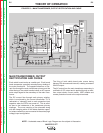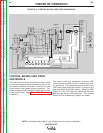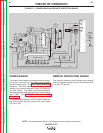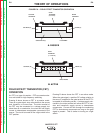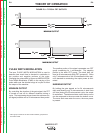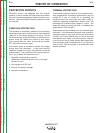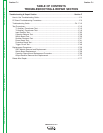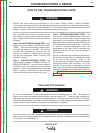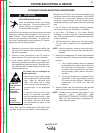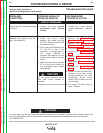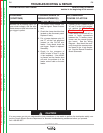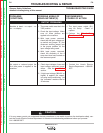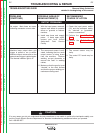
PROTECTIVE CIRCUITS
Protective circuits are designed into the Invertec
machine to sense trouble and shut down the machine
before the trouble damages the internal machine com-
ponents. Both overload and thermal protection circuits
are included.
OVERLOAD PROTECTION
The machine is electrically protected from producing
abnormally high output currents due to short electrode
“stick-out” or the nozzle shorting to the work. Should
the output current exceed 500 amps, an electronic pro-
tection circuit will reduce the current to zero amps.
Five seconds after the “short” is removed the Invertec
STT will produce normal output.
A protection circuit is included to monitor the voltage
across input filter capacitors. In the event that the
capacitor voltage is too high, the protection circuit will
prevent output. The protection circuit may prevent out-
put, if any of these circumstances occur:
1. Capacitor conditioning is required
(Required if machine has been off for prolonged
periods of time.)
2. Line surges over 500 VAC
3. Internal Component damage
4. Improper connections
THERMAL PROTECTION
Thermostats protect the machine from excessive oper-
ating temperatures. Excessive temperatures may be
caused by a lack of cooling air or operating the
machine beyond the duty cycle and output rating. If
excessive operating temperature should occur, the
thermostat will prevent output voltage or current. The
meter will remain on during this time. (In addition, the
yellow thermo LED will light.)
Thermostats are self-resetting once the machine cools
sufficiently. If the thermostat shutdown was caused by
excessive output or duty cycle and the fan is operating
normally, the Power Switch may be left on and the
reset should occur within a 15-minute period. If the fan
is not turning or the air intake louvers were obstructed,
then the power must be switched off for 15 minutes in
order to reset. The fan problem or air obstruction must
also be corrected.
THEORY OF OPERATION
E-10 E-10
INVERTEC STT
Return to Section TOC Return to Section TOC Return to Section TOC Return to Section TOC
Return to Master TOC Return to Master TOC Return to Master TOC Return to Master TOC



